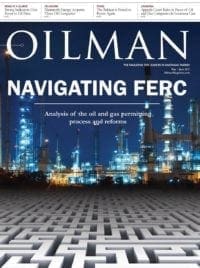As companies seek to maximize efficiency in this unfavorable economic environment, they employ new technologies which enable them to re-use certain resources in a cost-effective manner. Whether it be through software, hardware, or new refinery or recycling facilities equipped with state of the art technologies, companies are increasingly looking to new means to gain a competitive edge.
According to a news release by The Woodlands, Texas-based Newfield Exploration Company, the company recently decided to break ground on a new recycling facility. The facility’s purpose will be the cleansing and eventual reuse of flowback and produced water from its operations in the Sooner Trend, Anadarko (Basin), Canadian and Kingfisher counties, also known as the STACK regions. The facility will be located in Kingfisher, Oklahoma, and will use aerated biologic treatment technology to recycle water for use in hydraulic fracking operations.
“The new Barton facility will be capable of recycling both the flowback and produced water currently generated from our STACK wells and hydraulic fracturing operations,” stated Newfield Chairman Lee K. Boothby. “Today’s innovative technologies are allowing us to more cost-effectively recycle and reuse the water we produce from our operations. This is good for our economics and good for the environment,” he continued.
The facility, which will be named the Barton Water Recycle Facility, will require a multi-million dollar investment and will process roughly 30,000 barrels of water per day. It will be built upon a 30-acre site and will have the ability to store 6.5 million barrels of water in underground pipelines.
The process for treating the water uses “natural and enhanced bioremediation” to separate and exterminate impurities in the produced water. The firm will be able to use the recycled water in its fracking operations, as the quality of the water will be similar to the water originally found in reservoir rock.
“The time when the procurement and disposal of water in oil and gas operations was viewed as routine is over,” stated Dana Murphy, the Chairman of the Oklahoma Corporate Commission. “Water has now become an absolutely critical component that demands careful planning for environmental, conservation and business reasons. This facility is a step in the continuing evolution of the industry.”
The facility is expected to be completed early in the third quarter of 2017.





